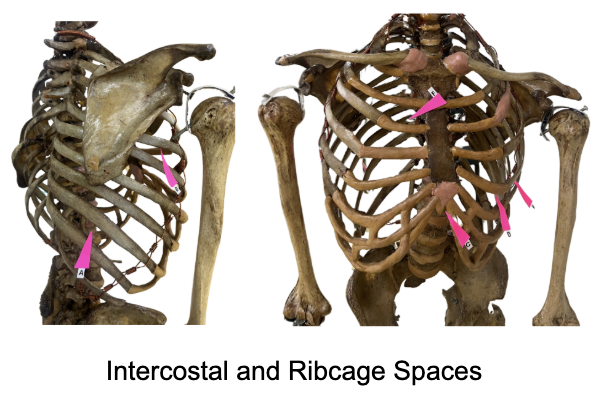Osteology - Thoracic Cage
1/164
There's no tags or description
Looks like no tags are added yet.
Name | Mastery | Learn | Test | Matching | Spaced |
|---|
No study sessions yet.
165 Terms
D
Identify the 1st rib
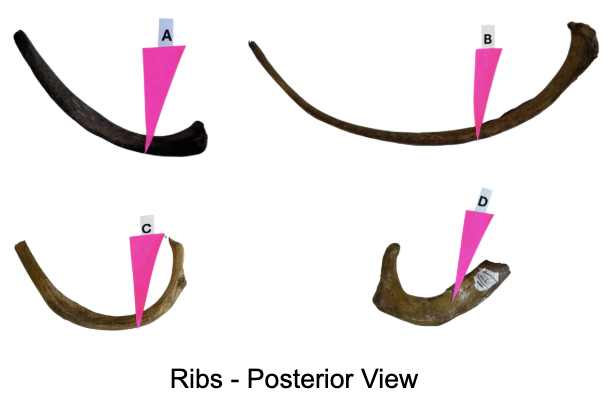
C
Identify the 2nd rib

A
Identify the 12th rib
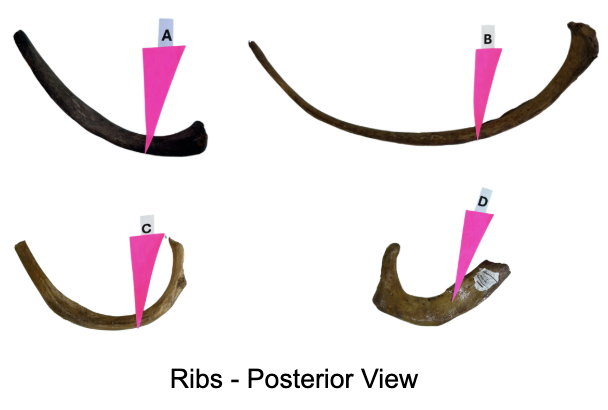
B
Identify the 8th rib
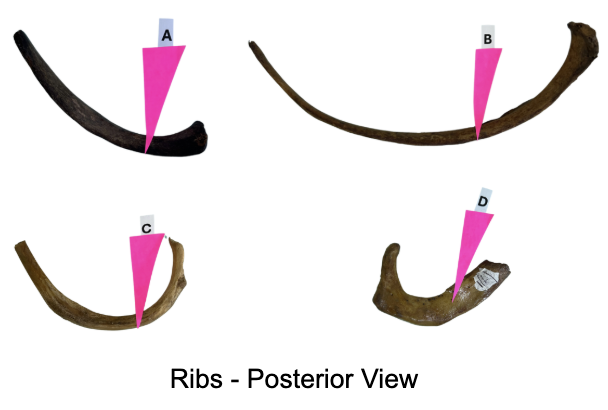
A. Ribs 1-7
Which of these sets of ribs is considered as The "True ribs"?
A. Ribs 1-7
B. Ribs 8-10
C. Ribs 11-12
B. Ribs 8-10
Which of these sets of ribs is considered as The "False ribs"?
A. Ribs 1-7
B. Ribs 8-10
C. Ribs 11-12
C. Ribs 11-12
Which of these sets of ribs is considered as The "Floating ribs"?
A. Ribs 1-7
B. Ribs 8-10
C. Ribs 11-12
C. Ribs 11-12
Which of these sets of ribs is considered as Ribs with NO NECK and NO TUBERCLE?
A. Ribs 1-7
B. Ribs 8-10
C. Ribs 11-12
A. Ribs 1-7
Which of these sets of ribs is considered as Ribs which extend from Thoracic Vertebrae to Sternum via respective Costal Cartilages?
A. Ribs 1-7
B. Ribs 8-10
C. Ribs 11-12
D. Ribs 1-10
Which of these sets of ribs is considered as Costal Cartilages?
A. Ribs 1-7
B. Ribs 8-10
C. Ribs 11-12
D. Ribs 1-10
B. Ribs 8-10
Which of these sets of ribs is considered as Ribs which extend from Thoracic Vertebrae to Sternum via the Costal Cartilages of 7th Rib ?
A. Ribs 1-7
B. Ribs 8-10
C. Ribs 11-12
A. Rib 1
Which of these ribs is horizontally placed, with 1 facet, 2 grooves for Subclavian Artery and Vein; with Scalene Tubercle?
A. Rib 1
B. Rib 2
C. Ribs 3-9
D. Rib 10
E. Ribs 11-12
B. Rib 2
Which of these ribs is with 2 facets and Tuberosity for Serratus Anterior?
A. Rib 1
B. Rib 2
C. Ribs 3-9
D. Rib 10
E. Ribs 11-12
D. Rib 10
Which of these ribs is considered ALMOST typical rib but with only 1 facet?
A. Rib 1
B. Rib 2
C. Ribs 3-9
D. Rib 10
E. Ribs 11-12
E. Ribs 11-12
Which of these ribs are with NO NECK and NO TUBERCLE and with 1 facet?
A. Rib 1
B. Rib 2
C. Ribs 3-9
D. Rib 10
E. Ribs 11-12
C. Ribs 3-9
Which of these ribs contain 2 facets; neck; tubercle; angle; costal groove; cup; and with long semi-twisted body?
A. Rib 1
B. Rib 2
C. Ribs 3-9
D. Rib 10
E. Ribs 11-12
C. Ribs 3-9
Which of these ribs are the TYPICAL RIBS ?
A. Rib 1
B. Rib 2
C. Ribs 3-9
D. Rib 10
E. Ribs 11-12
C. Ribs 3-9
The following are ATYPICAL RIBS, except for:
A. Rib 1
B. Rib 2
C. Ribs 3-9
D. Rib 10
E. Ribs 11-12
A
Identify the head with 2 articulating facets/regions (Superior and Inferior)
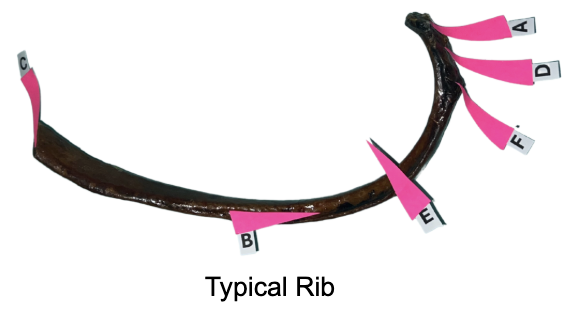
D
Identify the neck

F
Identify the tubercle (with articulating part and non-articulating part)
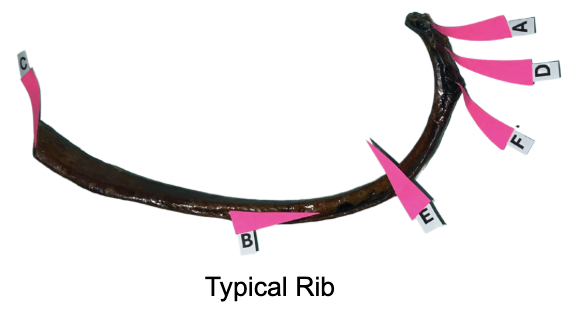
E
Identify the angle of the body
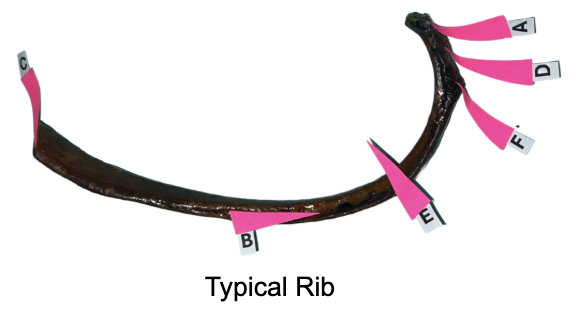
C
Identify the cup for costal cartilage
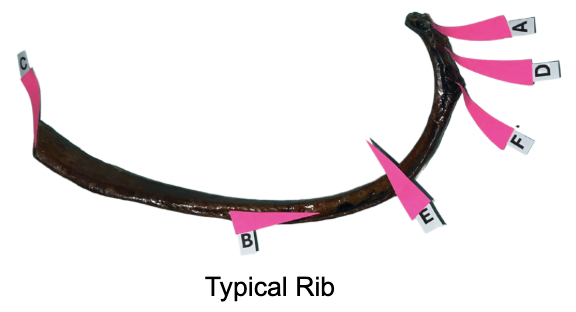
B
Identify the costal groove
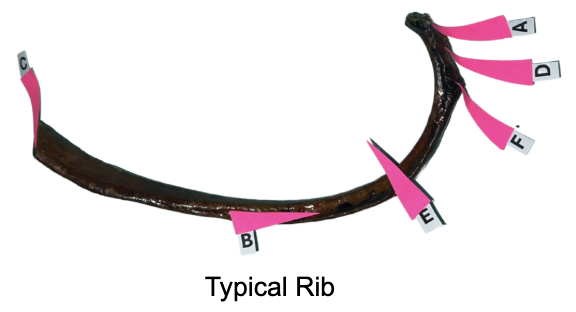
A
Identify the head with 1 articulating facet/region

B
Identify the neck (check tubercle after/near the neck)
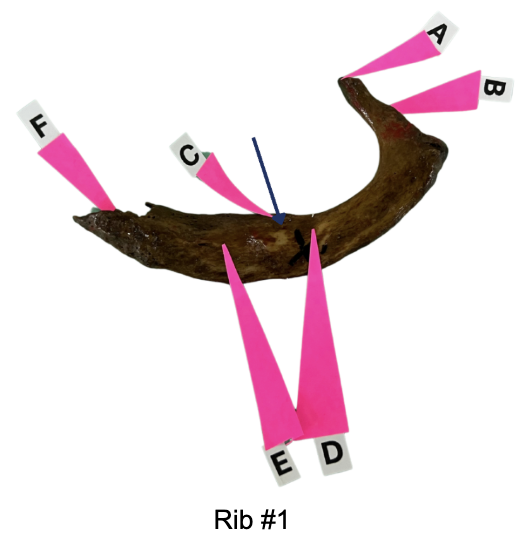
D
Identify the groove for subclavian artery
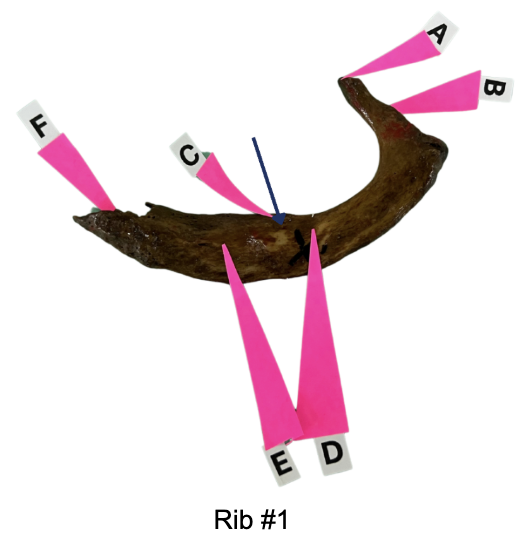
E
Identify the groove for the subclavian vein

F
Identify the cup for costal cartilage
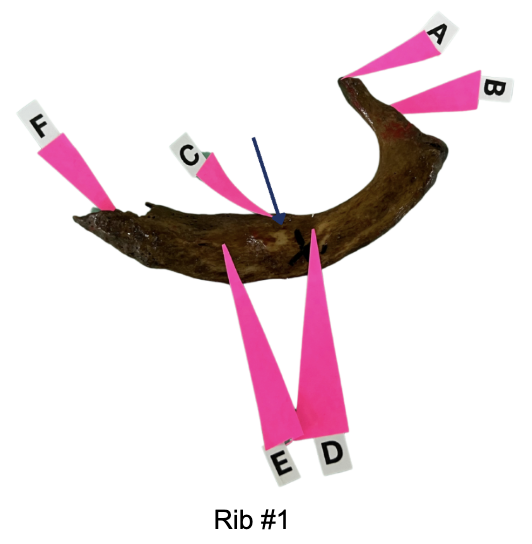
C
Identify the scalene tubercle for insertion of anterior scaleneus (check insertion site for middle scaleneus)

B. Tuberosity for Serratus Anterior
Name the pointed rough surface of Rib 2:
A. Scalene Tubercle
B. Tuberosity for Serratus Anterior
C. Costal Groove
D. Costal Cup
E. Costal Facet
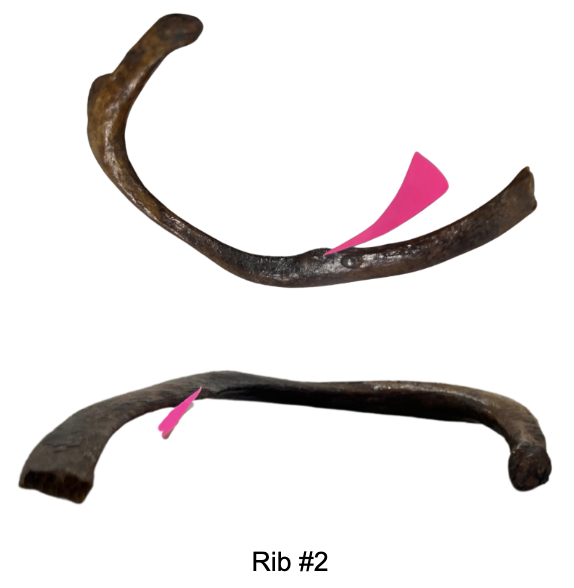
A. Joint
The "articulating part" of the tubercle of a rib is for what part of the transverse process:
A. Joint
B. Ligament
C. Tendon
D. Artery-&-Vein

B. Ligament
The "non-articulating part" of the tubercle of a rib is for what part of the transverse process:
A. Joint
B. Ligament
C. Tendon
D. Artery-&-Vein
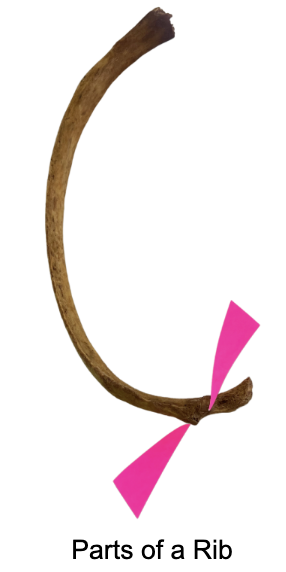
B. Inferior Costal facet of the Thoracic Vertebra
The Superior Articulating Facet of the Head of a rib articulates with the:
A. Superior Costal facet of the Thoracic Vertebra
B. Inferior Costal facet of the Thoracic Vertebra
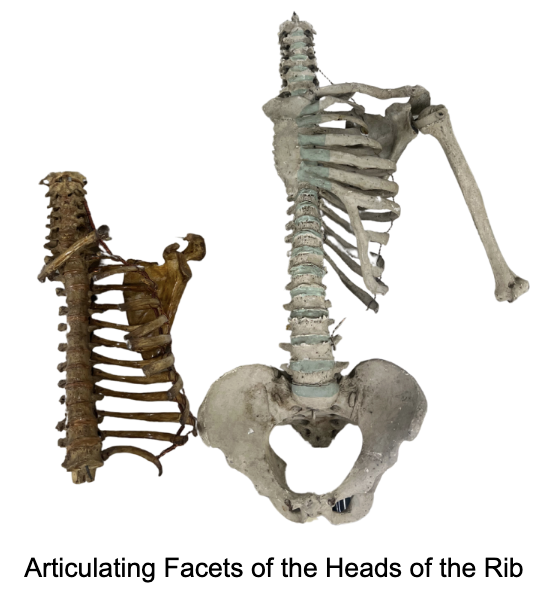
A. Superior Costal facet of the Thoracic Vertebra
The Inferior Articulating Facet of the Head of a rib articulates with the:
A. Superior Costal facet of the Thoracic Vertebra
B. Inferior Costal facet of the Thoracic Vertebra
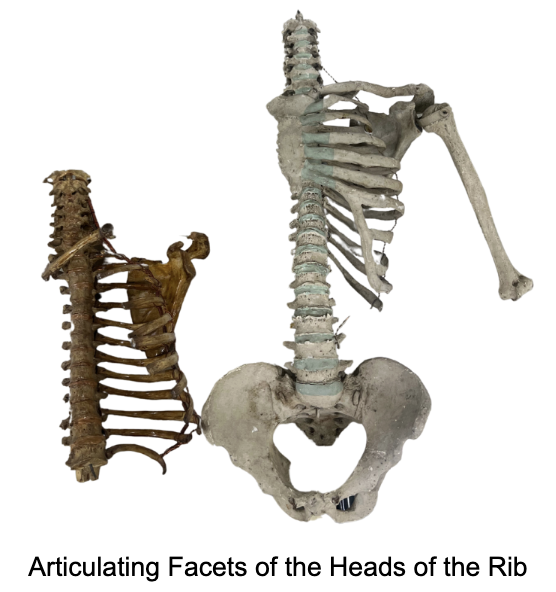
A
Identify the manubrium
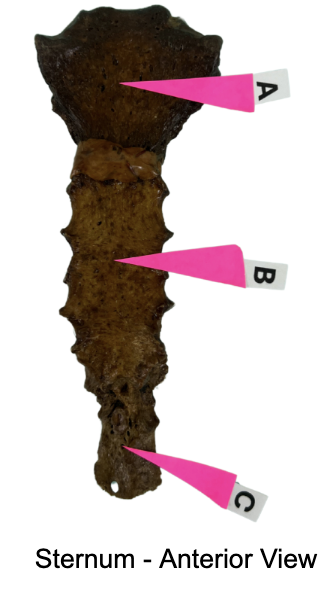
B
Identify the “body of sternum” (aka “gladiolus”)

C
Identify the xiphoid process
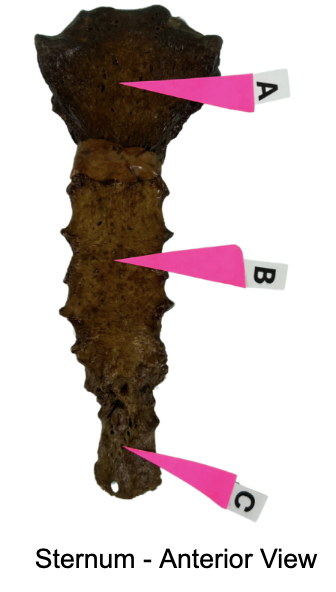
C
Identify the angle of Louis

D
Identify the xiphisternal joint
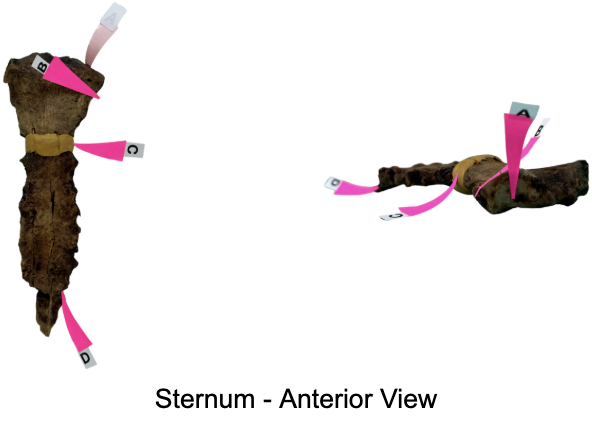
B
Identify the costal facet for rib 1
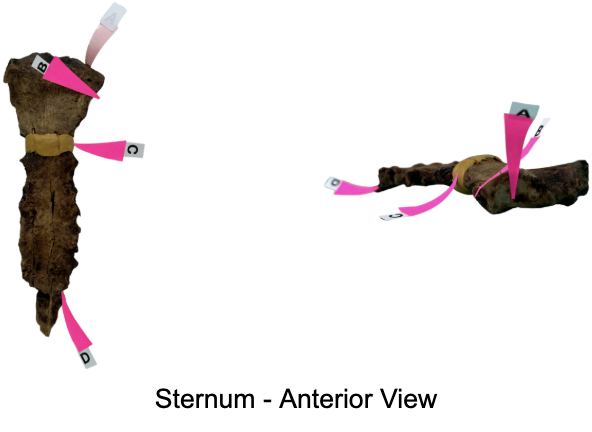
A
Identify the groove for sternal end of the clavicle
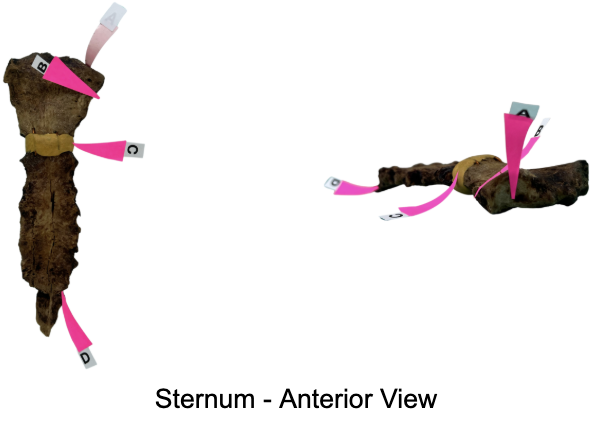
A. The “Angle of Louis”
Identify which landmark of the sternum: This facets on either side of the Angle of Louis afford articulation of 2nd Rib's Costal Cartilage
A. The “Angle of Louis”
B. The “Xiphisternal Joint”
C. The “Tip of the Xiphoid Process”
D. The Groove for “Sternal End of the Clavicle”
E. The “Suprajugular Notch”
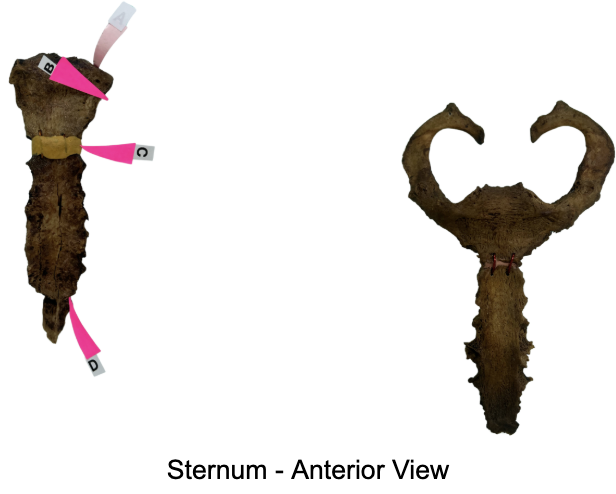
B. The “Xiphisternal Joint”
Identify which landmark of the sternum: This facets on either side of the Xiphisternal Joint afford articulation of 7th Rib's Costal Cartilage
A. The “Angle of Louis”
B. The “Xiphisternal Joint”
C. The “Tip of the Xiphoid Process”
D. The Groove for “Sternal End of the Clavicle”
E. The “Suprajugular Notch”
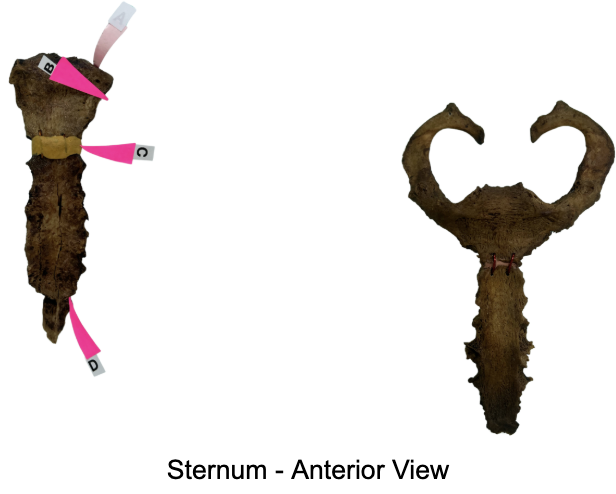
A
Identify the angle of Louis
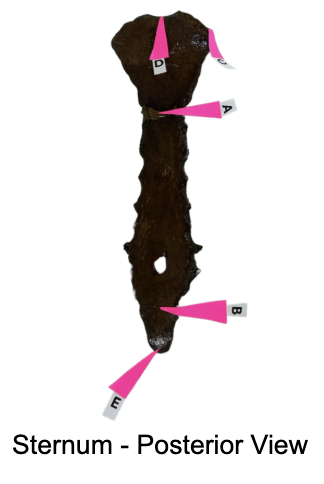
B
Identify the xiphisternal joint
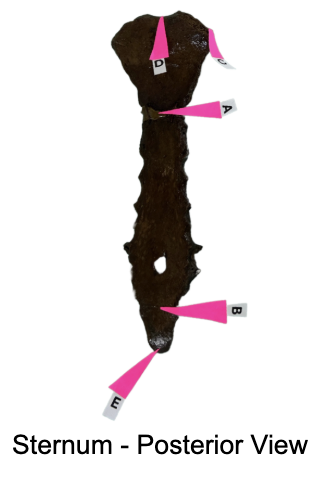
E
Identify the tip of the xiphoid process
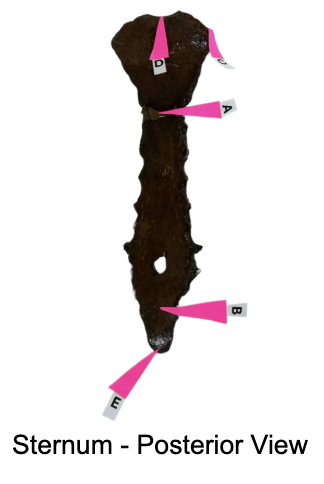
C
Identify the groove for the sternal end of the clavicle
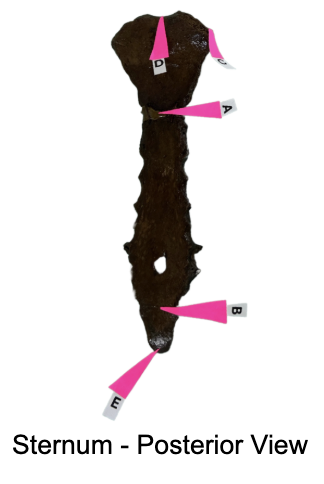
D
Identify the suprajugular notch
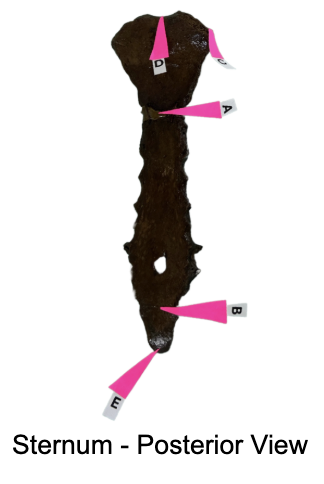
D. The “Suprajugular Notch”
Identify the vertebral level of the landmarks of the sternum: This usually lands at the level of T2-T3.
A. The “Angle of Louis”.
B. The “Xiphisternal Joint”
C. The Groove for “Sternal End of the Clavicle”
D. The “Suprajugular Notch”
E. The “Tip of the Xiphoid Process”
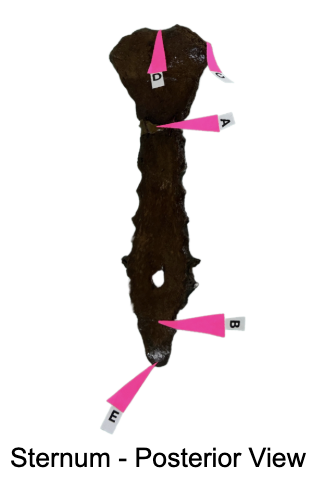
C. The Groove for “Sternal End of the Clavicle”
Identify the vertebral level of the landmarks of the sternum: This usually lands at the level of C7-T1.
A. The “Angle of Louis”.
B. The “Xiphisternal Joint”
C. The Groove for “Sternal End of the Clavicle”
D. The “Suprajugular Notch”
E. The “Tip of the Xiphoid Process”

A. The “Angle of Louis”.
Identify the vertebral level of the landmarks of the sternum: This lands at the level of T4-T5.
A. The “Angle of Louis”.
B. The “Xiphisternal Joint”
C. The Groove for “Sternal End of the Clavicle”
D. The “Suprajugular Notch”
E. The “Tip of the Xiphoid Process”

B. The “Xiphisternal Joint”
Identify the vertebral level of the landmarks of the sternum: This lands at the level of T9.
A. The “Angle of Louis”.
B. The “Xiphisternal Joint”
C. The Groove for “Sternal End of the Clavicle”
D. The “Suprajugular Notch”
E. The “Tip of the Xiphoid Process”
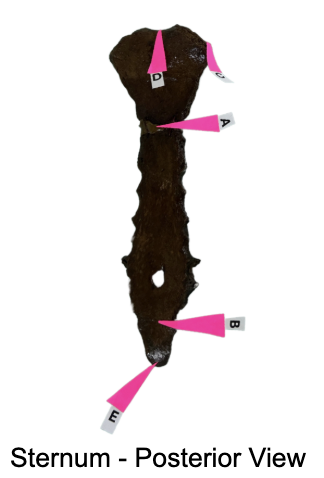
E. The “Tip of the Xiphoid Process”
Identify the vertebral level of the landmarks of the sternum: This lands at the level of T10.
A. The “Angle of Louis”.
B. The “Xiphisternal Joint”
C. The Groove for “Sternal End of the Clavicle”
D. The “Suprajugular Notch”
E. The “Tip of the Xiphoid Process”
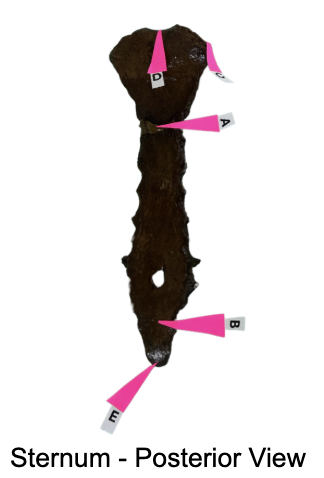
D. Ludwig's line
Name that imaginary line/plane extrapolated and simulated by the sticker (from Angle of Louis to IV disc of T4-T5):
A. Jacoby's line
B. Shenton's line
C. Tuffier's line
D. Ludwig's line
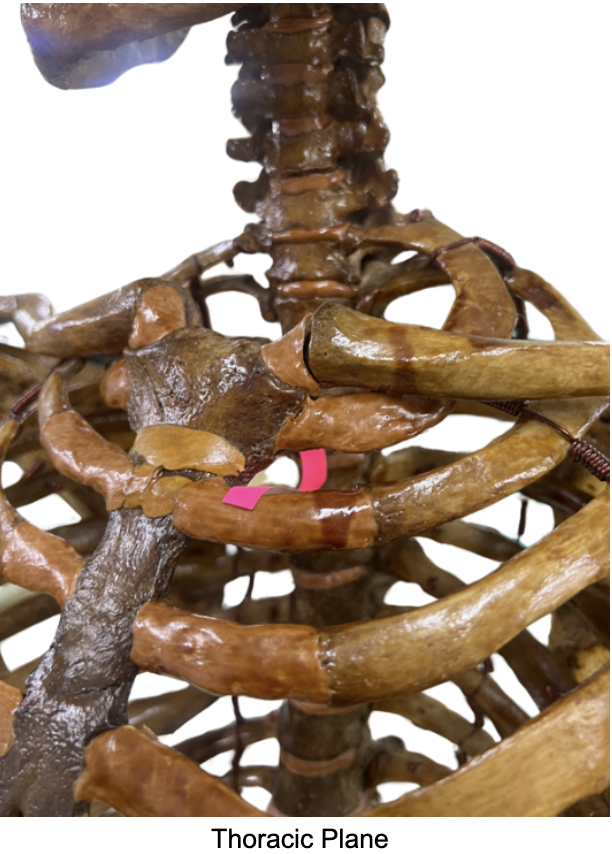
Red
CLASSIC PLACEMENT GUIDE OF 12 Lead-ECG (answer using colors): V1
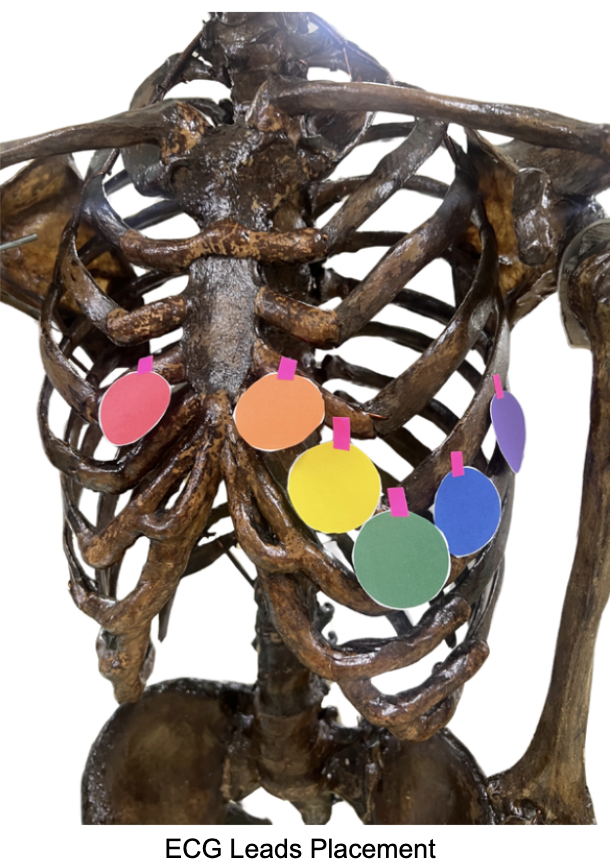
Orange
CLASSIC PLACEMENT GUIDE OF 12 Lead-ECG (answer using colors): V2
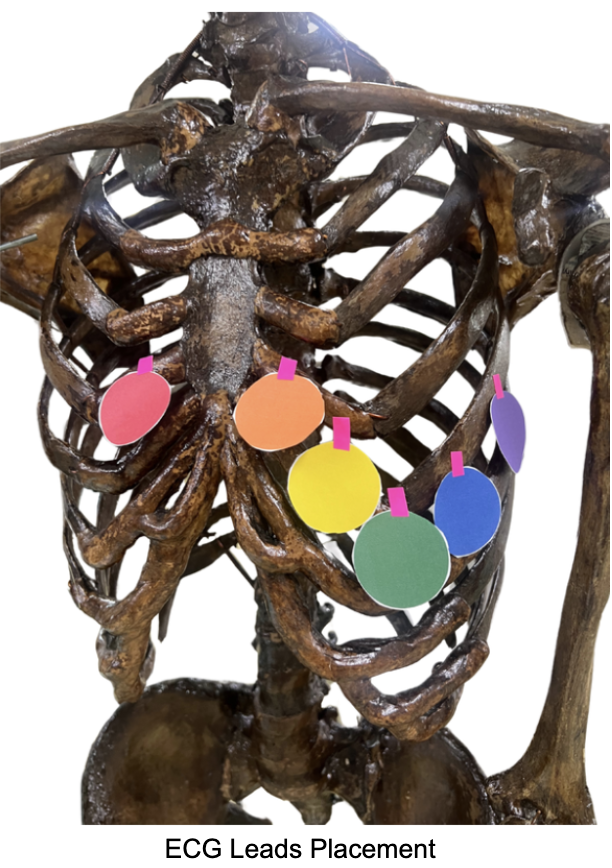
Yellow
CLASSIC PLACEMENT GUIDE OF 12 Lead-ECG (answer using colors): V3
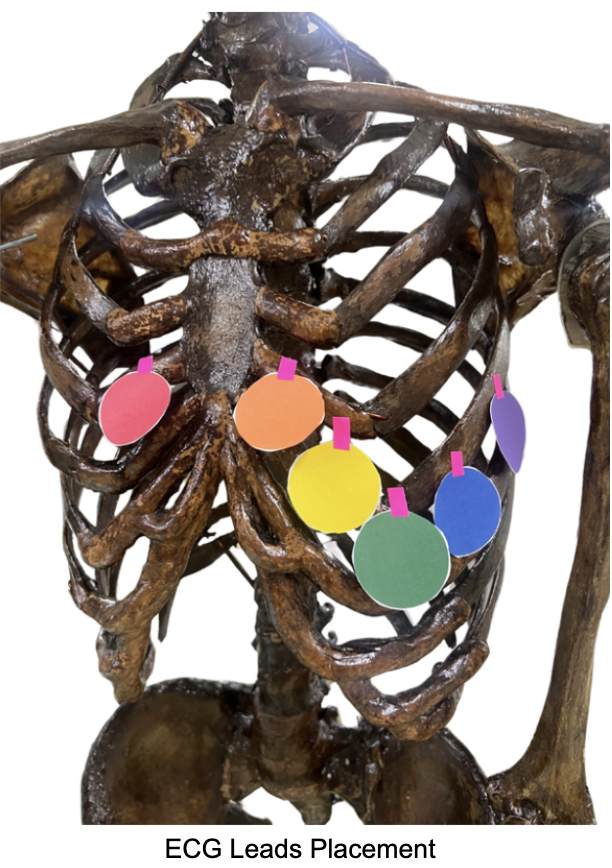
Green
CLASSIC PLACEMENT GUIDE OF 12 Lead-ECG (answer using colors): V4
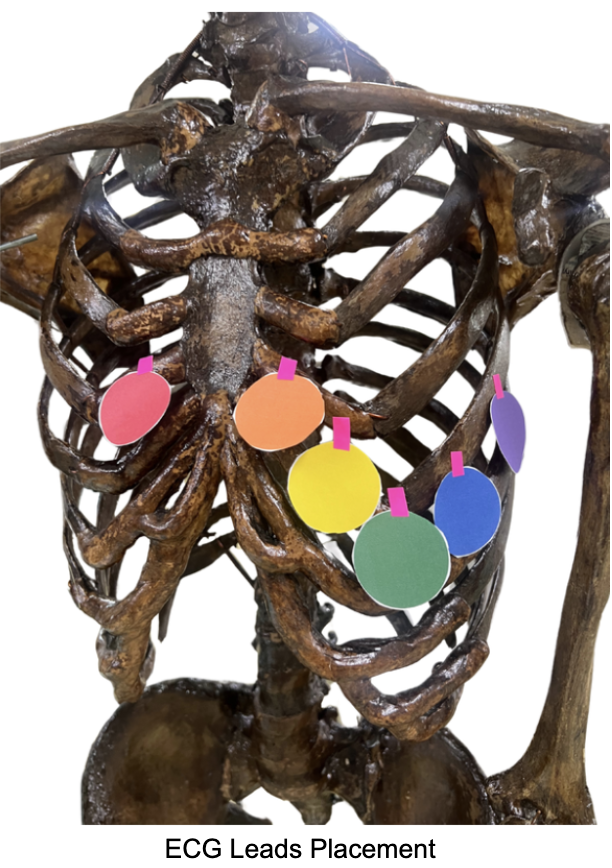
Blue
CLASSIC PLACEMENT GUIDE OF 12 Lead-ECG (answer using colors): V5

Purple
CLASSIC PLACEMENT GUIDE OF 12 Lead-ECG (answer using colors): V6

Red
Where is the: (answer using colors) 4th ICS, Right Parasternal Border
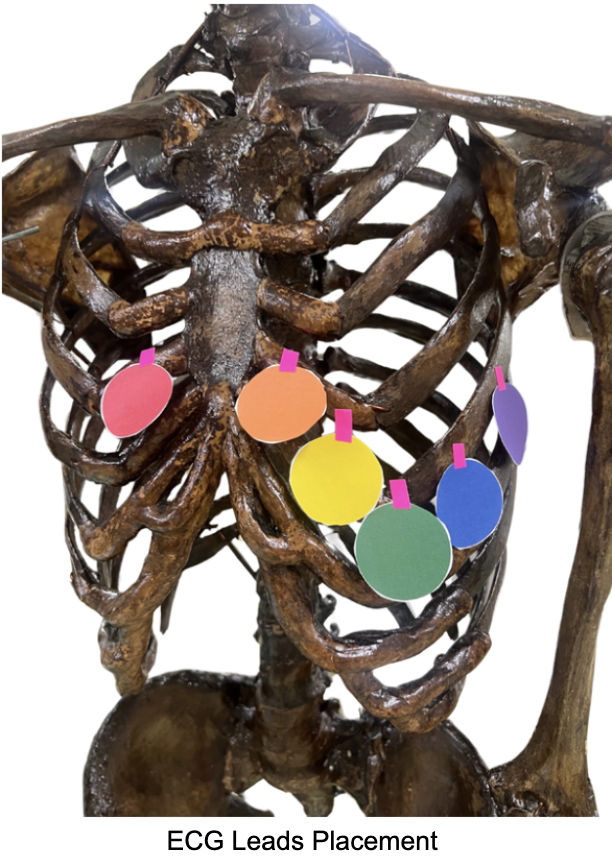
Orange
Where is the: (answer using colors) 4th ICS, Left Parasternal Border

Yellow
Where is the: (answer using colors) Between 4th ICS, Left Parasternal Border and 5th ICS, Left Mid-Clavicular Line

Green
Where is the: (answer using colors) 5th ICS, Left Mid-Clavicular Line
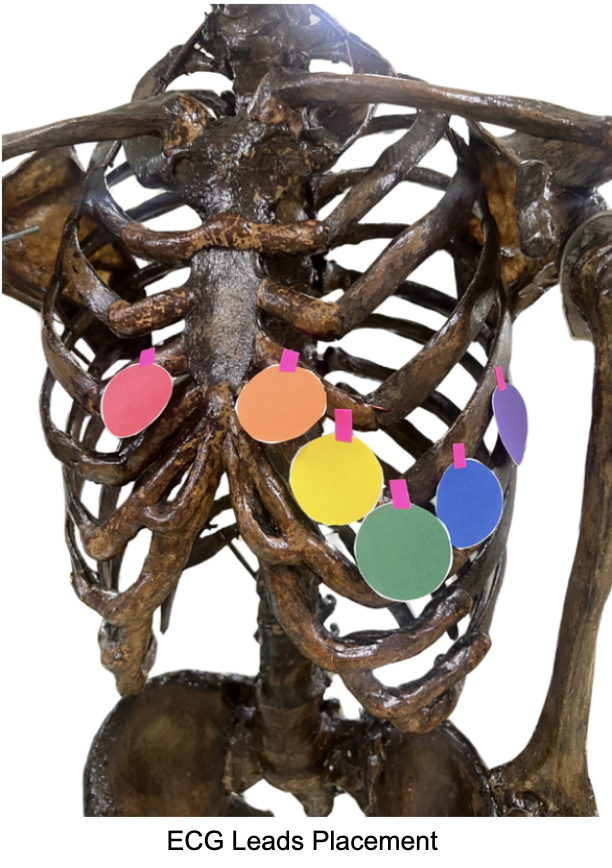
Blue
Where is the: (answer using colors) 5th ICS, Left Anterior Axillary Line
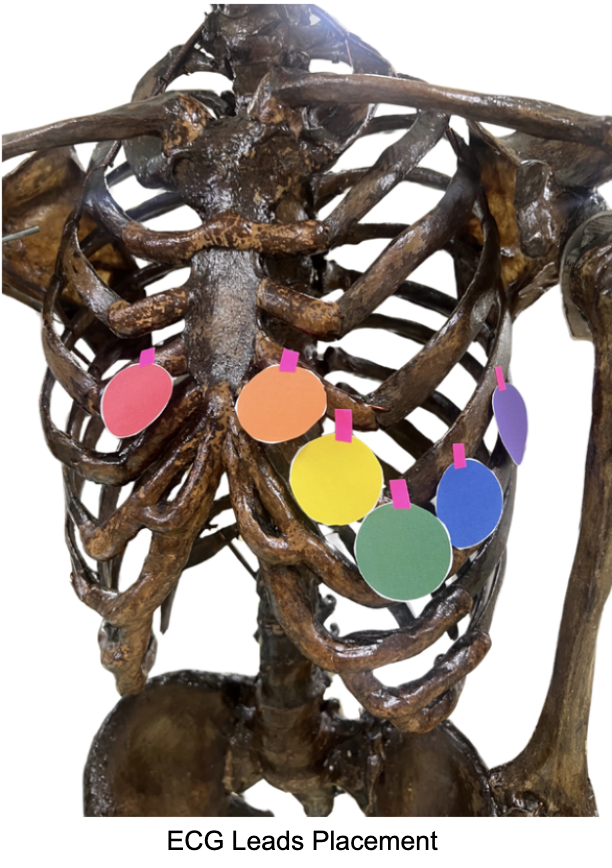
Purple
Where is the: (answer using colors) 5th ICS, Left Mid-Axillary Line
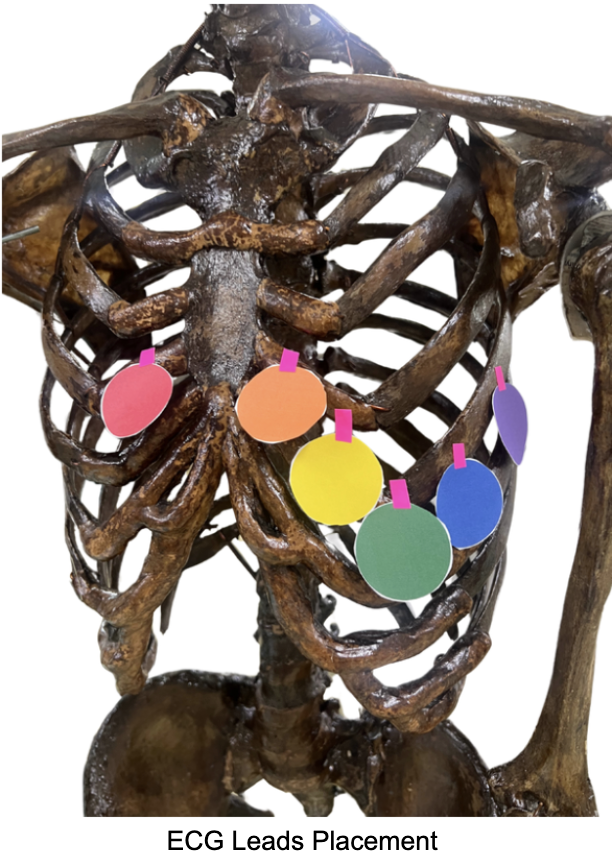
B
Where is: 5th ICS, Right, Mid-Axillary Line
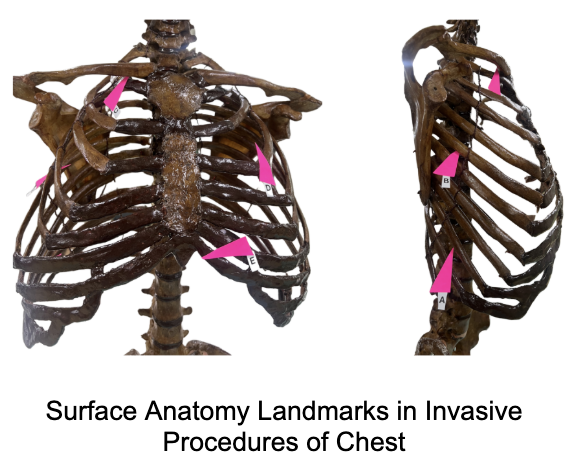
A
Where is: 9th ICS, Right, Anterior Axillary Line
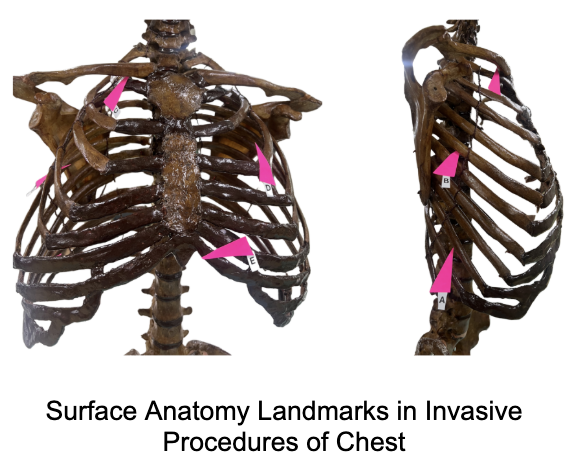
D
Where is: 2nd ICS, Left, Mid-Clavicular Line
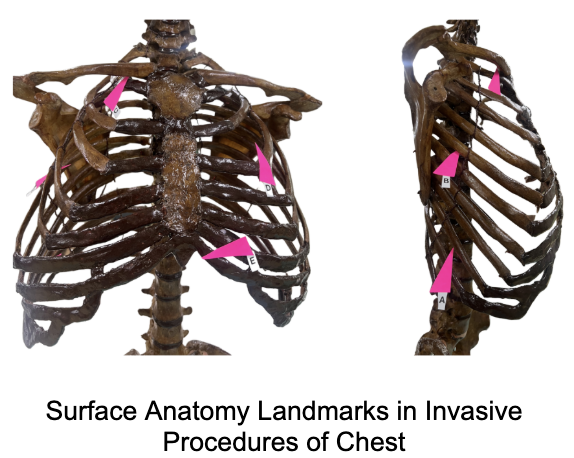
E
Where is: Left Xiphocostal Angle

C
Where is: Right Medial 3rd Costoclavicular Space
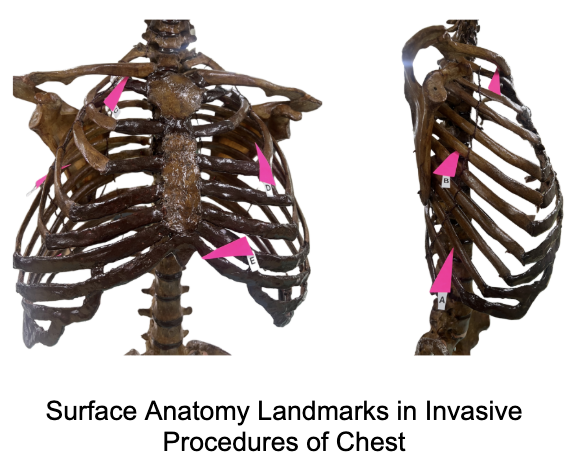
A
Which of these is the Area-of-Choice/Point-of-Entry for: Managing Pleural Effusion

E
Which of these is the Area-of-Choice/Point-of-Entry for: Managing Pericardiac Tamponade
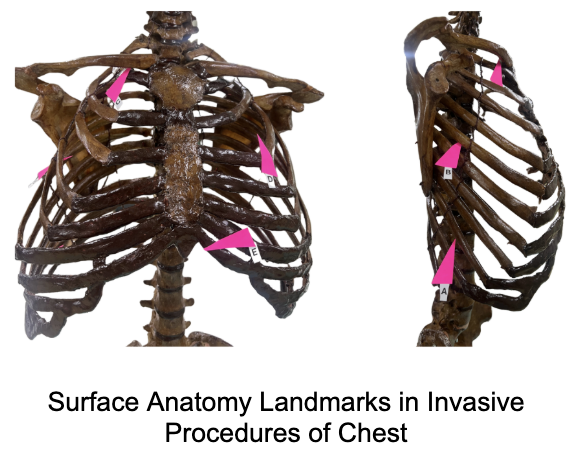
C
Which of these is the Area-of-Choice/Point-of-Entry for: Needle Decompression for Pedia Patients
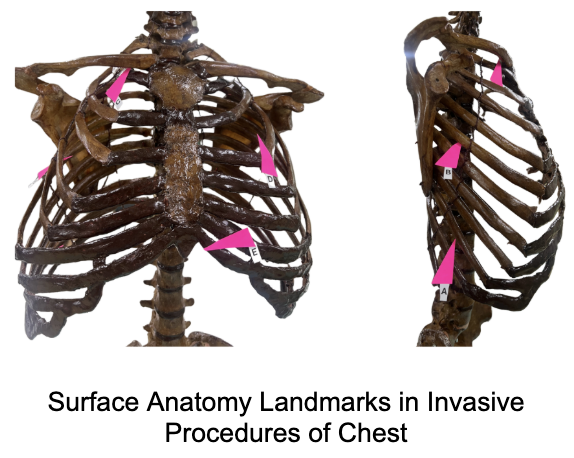
D
Which of these is the Area-of-Choice/Point-of-Entry for: Swanz-Ganz Catheterization
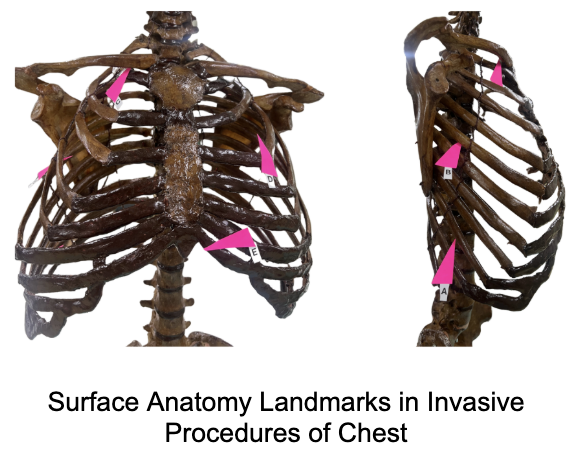
B
Which of these is the Area-of-Choice/Point-of-Entry for: Chest-Tube Thoracostomy for Adult Patients

A
Which of these is pointing to: Right half of the sternum (Opposite to the 4th ICS, Right)
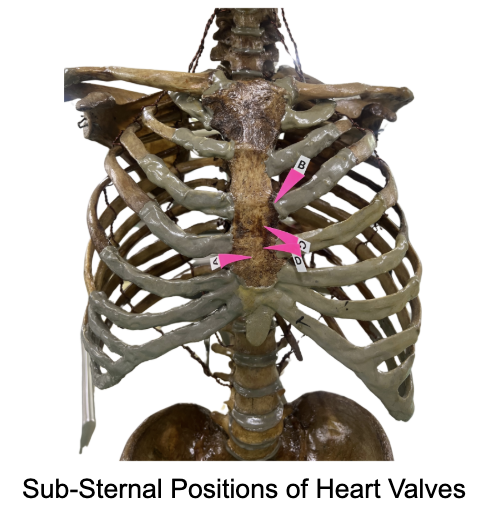
D
Which of these is pointing to: Left half of the sternum (Opposite to the 4th Costal Cartilage, Left)
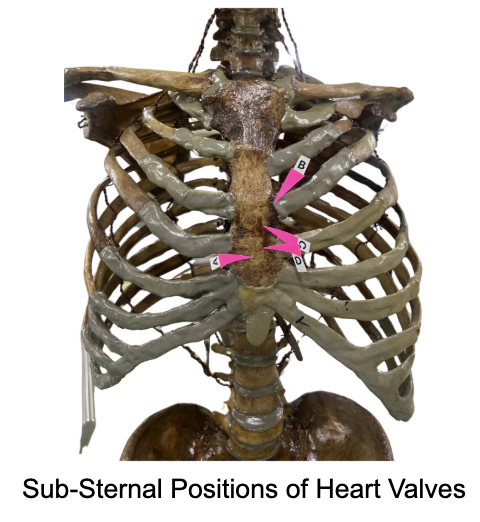
C
Which of these is pointing to: Left half of the sternum (Opposite to the 3rd ICS, Left)

B
Which of these is pointing to: Left Parasternal Border (End of 3rd Costal Cartilage)
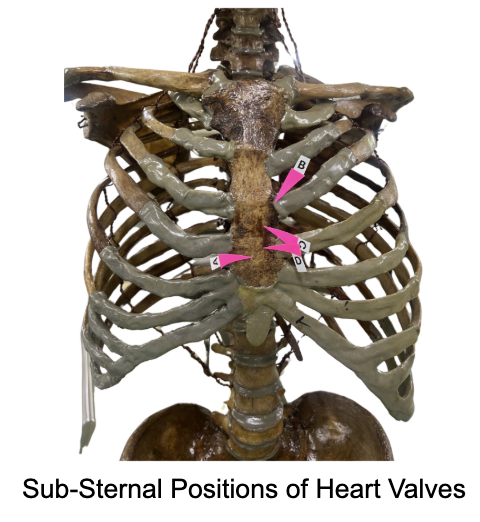
A
Where is the most probable location of: Tricuspid Valve
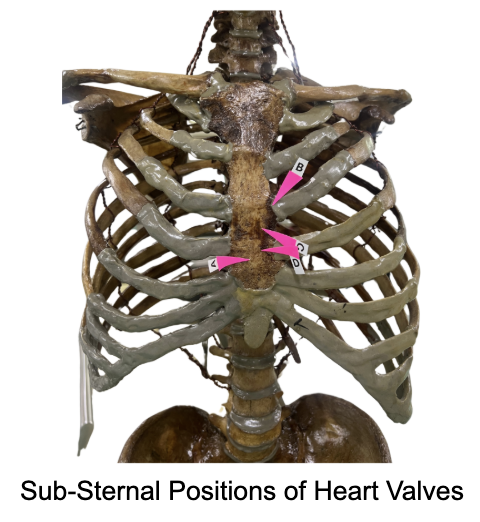
B
Where is the most probable location of: Mitral Valve

D
Where is the most probable location of: Pulmonic Valve
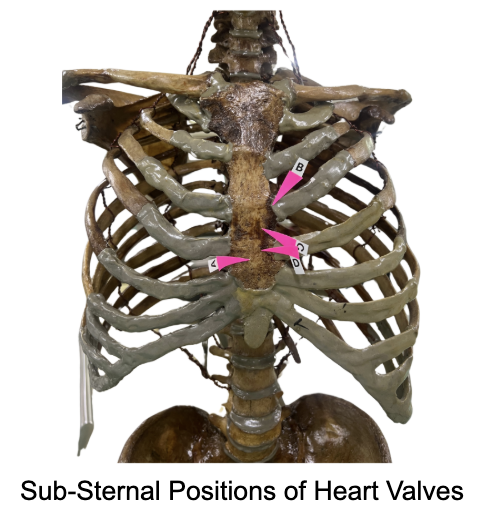
C
Where is the most probable location of: Aortic Valve
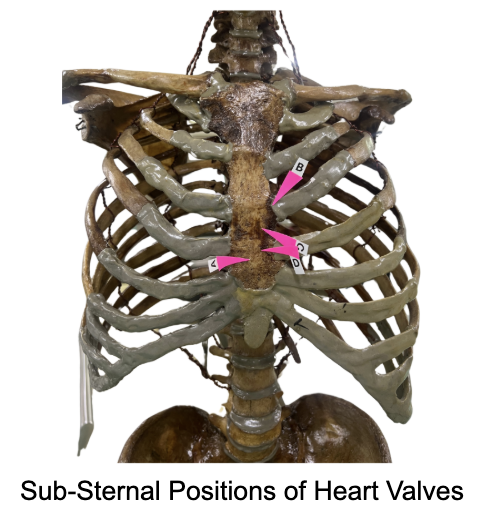
D
Where to place the pad of the stethoscopes in the patient's precordium, if you want to assess the integrity and status of: Mitral valve
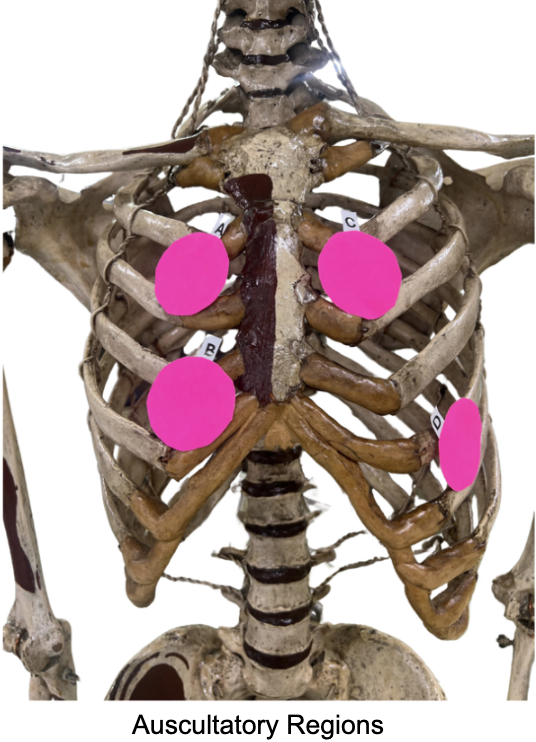
B
Where to place the pad of the stethoscopes in the patient's precordium, if you want to assess the integrity and status of: Tricuspid valve
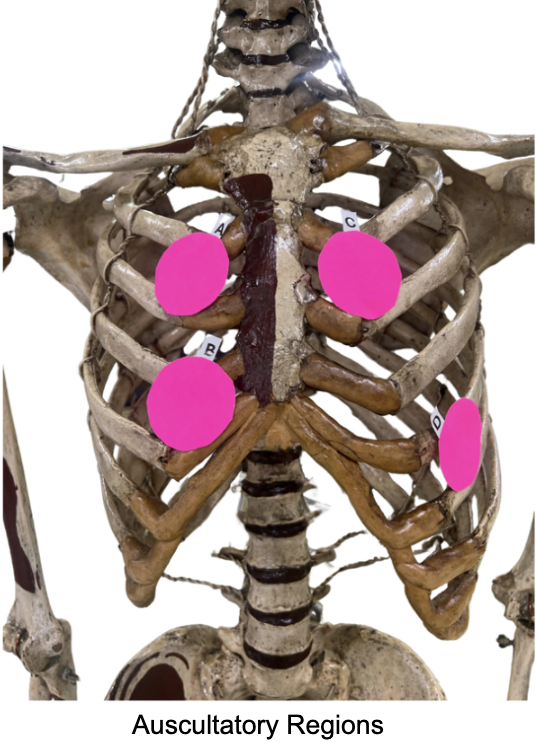
C
Where to place the pad of the stethoscopes in the patient's precordium, if you want to assess the integrity and status of: Pulmonic valve
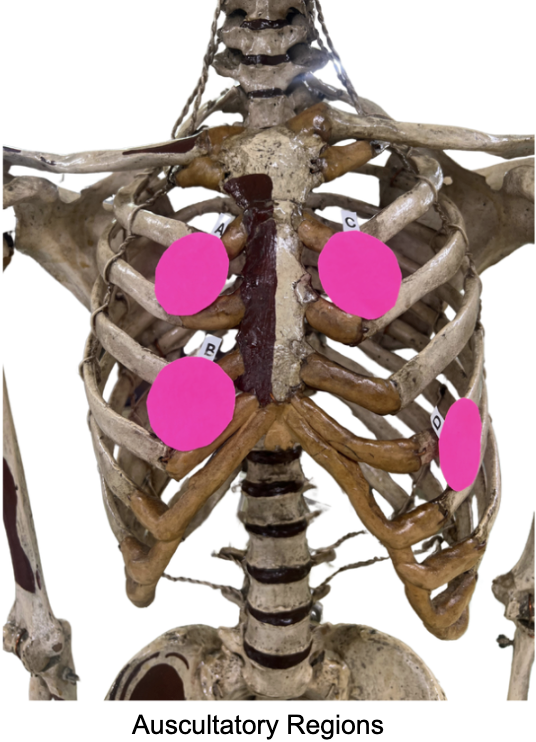
A
Where to place the pad of the stethoscopes in the patient's precordium, if you want to assess the integrity and status of: Aortic valve
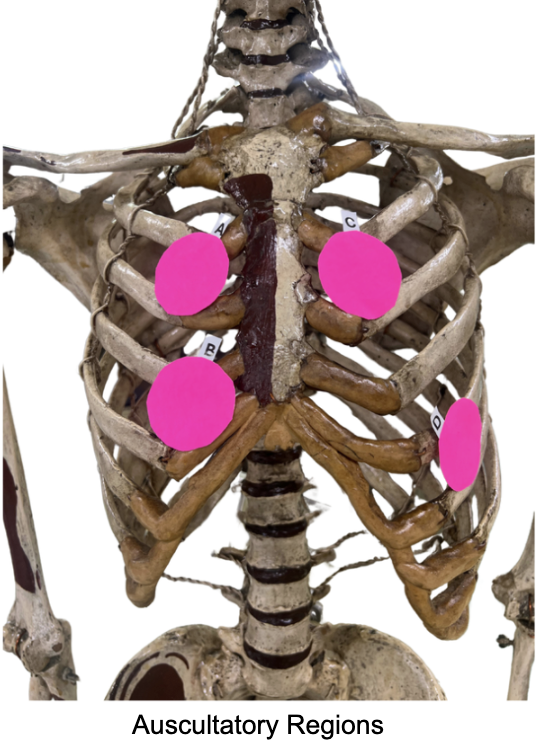
Erb’s Point
It is an important auscultation site where S1 and S2 heart sounds are equally loud, making it ideal for detecting murmurs. It is located at the 3rd intercostal space (ICS), left of the sternum
A
Which of these is placed on the: 2nd ICS, Right Parasternal Border
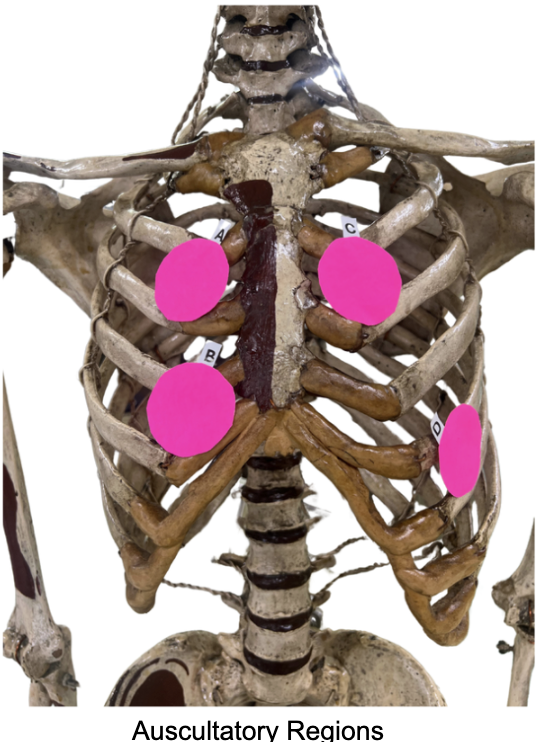
C
Which of these is placed on the: 2nd ICS, Left Parasternal Border
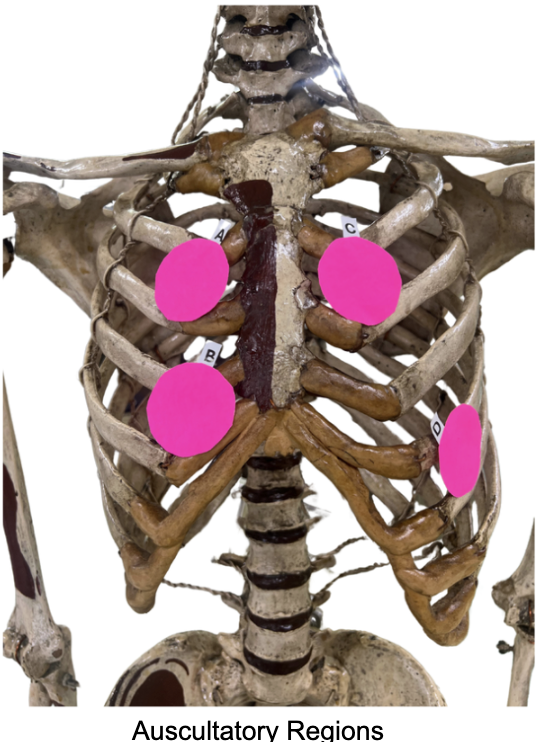
D
Which of these is placed on the: 5th ICS, Left Mid-Clavicular Line

B
Which of these is placed on the: 4th ICS, Right Parasternal Border
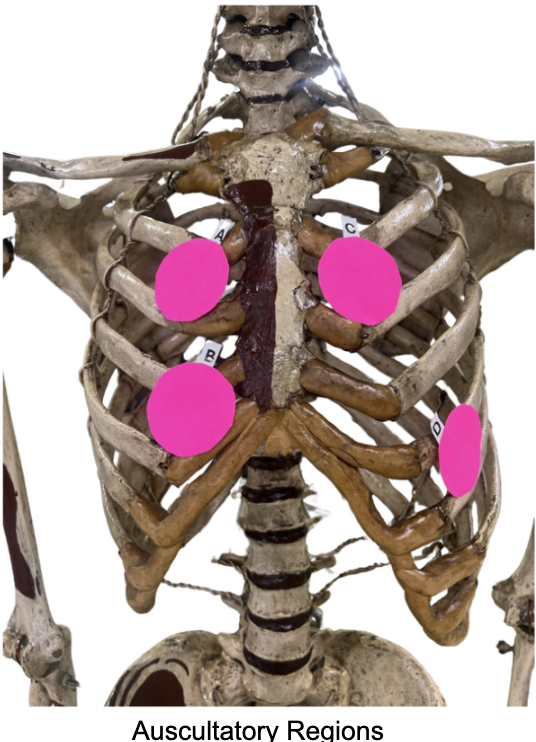
F
Which amongst these is the: 2nd ICS, Right Parasternal Border
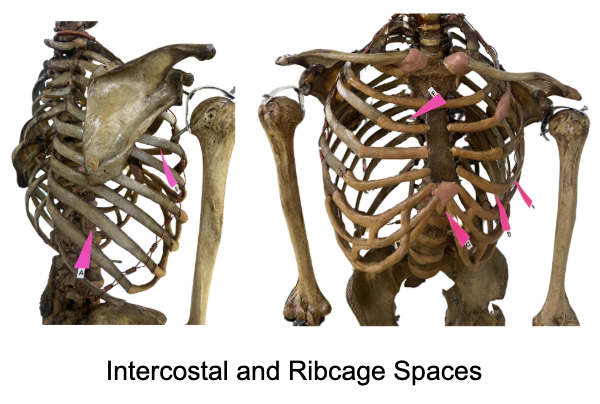
C
Which amongst these is the: Left Xiphocostal Angle
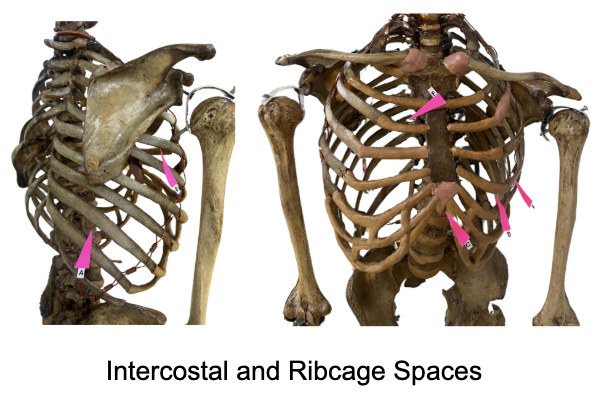
D
Which amongst these is the: 5th ICS, Left Mid-Clavicular Line
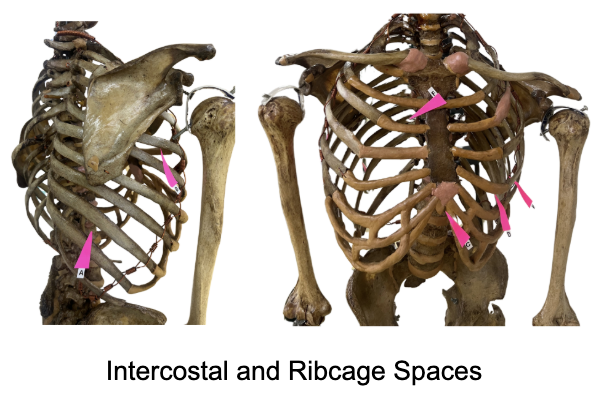
A
Which amongst these is the: 9th ICS, Right Scapular Line
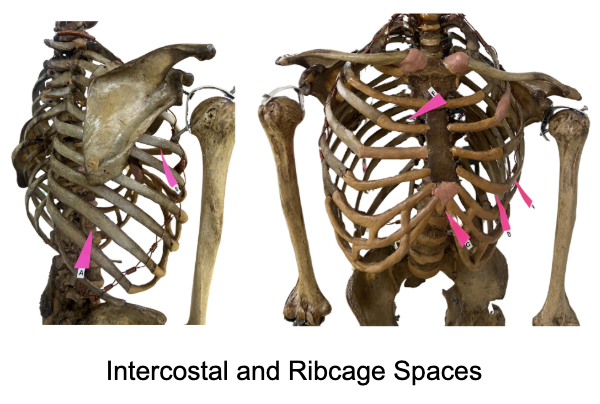
B
Which amongst these is the: 5th ICS, Right Mid-Axillary Line
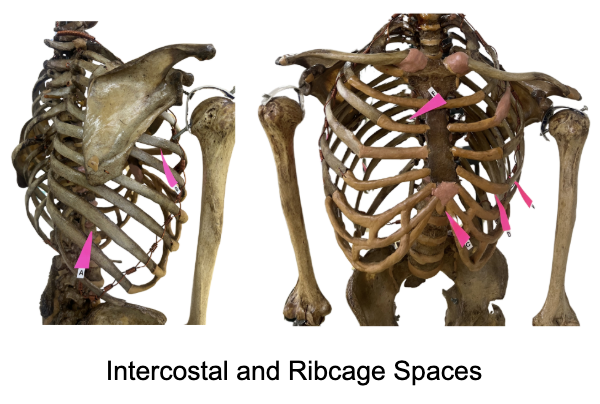
E
Which amongst these is the: 5th ICS, Left Anterior Axillary Line
